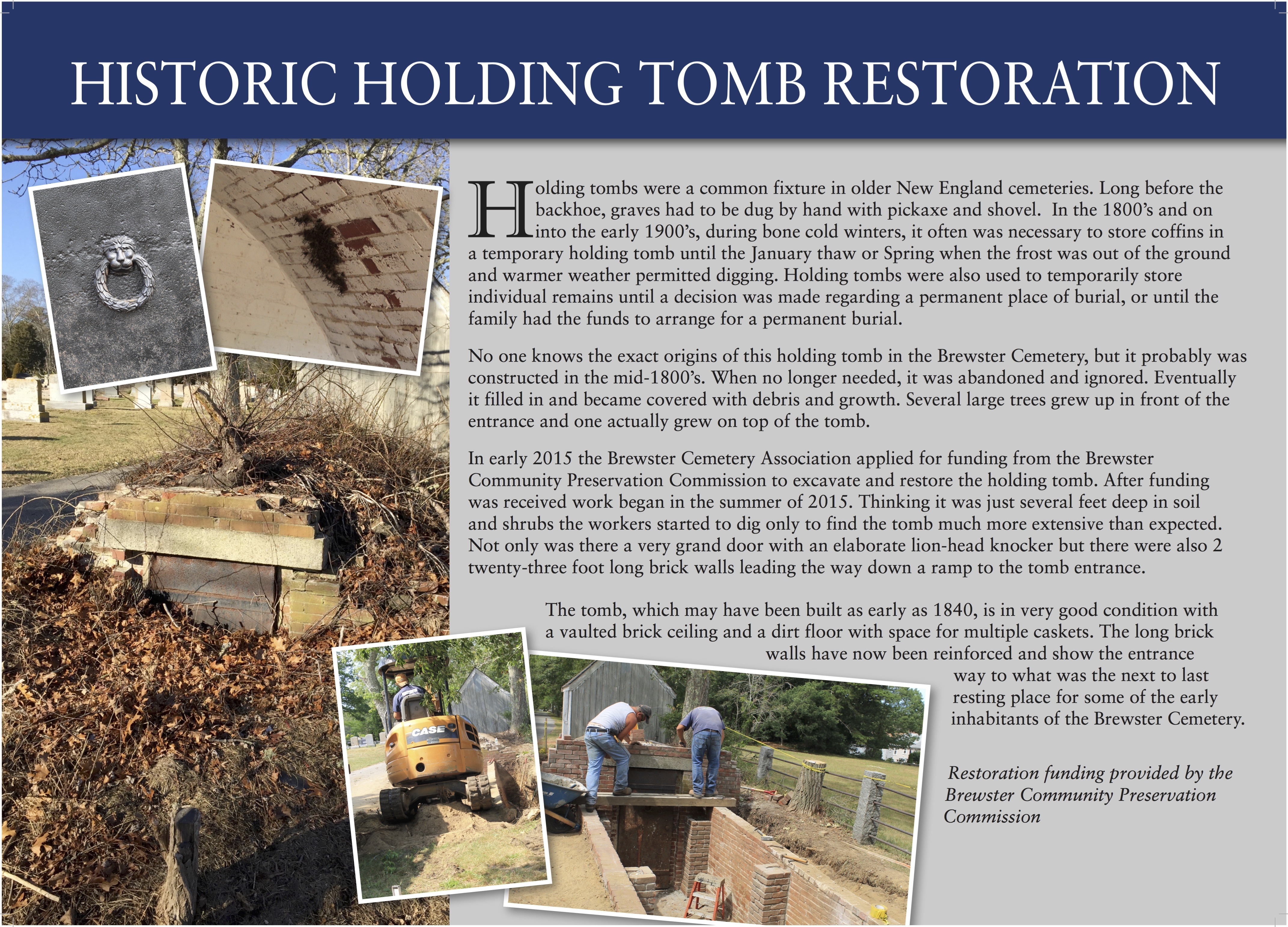The Brewster Cemetery, located in Brewster, MA on Lower Road in the Old Kings Highway Historic District, is a not-for-profit cemetery that is not associated with any government or religious organization. The cemetery is owned by the Brewster Cemetery Association, which is made up of lot owners and their heirs. There is no paid staff. Thirteen volunteer trustees, elected by the members of the Association, manage the cemetery. This historic cemetery is often referred to as “The Sea Captains’ Cemetery” because so many of Brewster’s mariners are buried there. It is also the burying ground for many of the founding families of Brewster with tombstones dating to the early 1800’s. It is the largest and most visited historic cemetery in Brewster and the only one of the eight older cemeteries in the town that still has lots available for purchase.
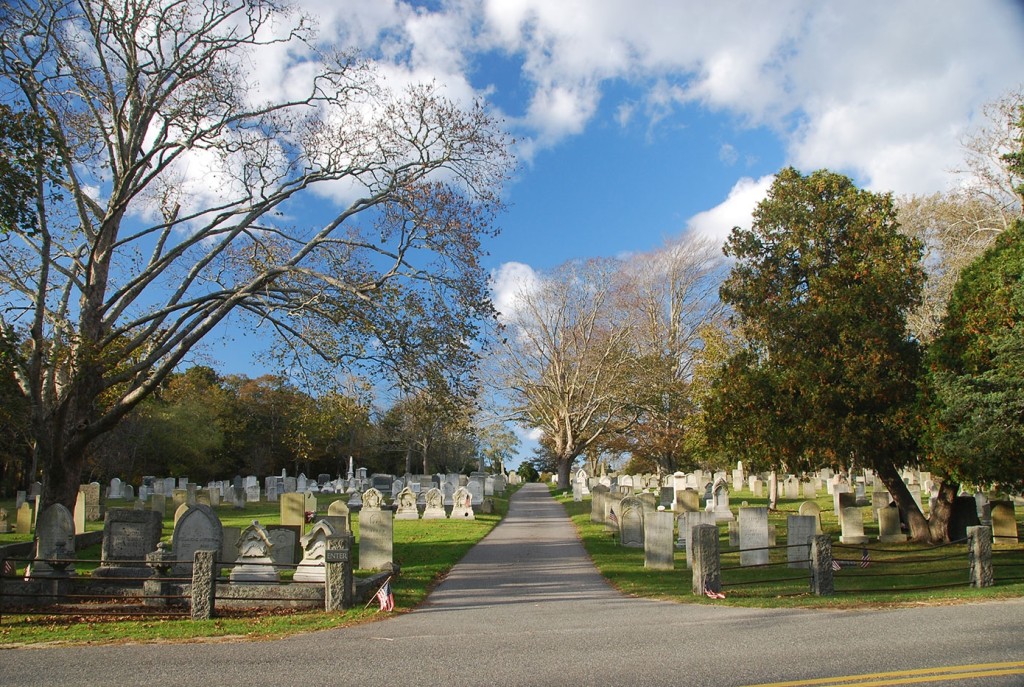
A brief history of the Cemetery
A pleasant stroll through the historic Cemetery can give one a fleeting glimpse i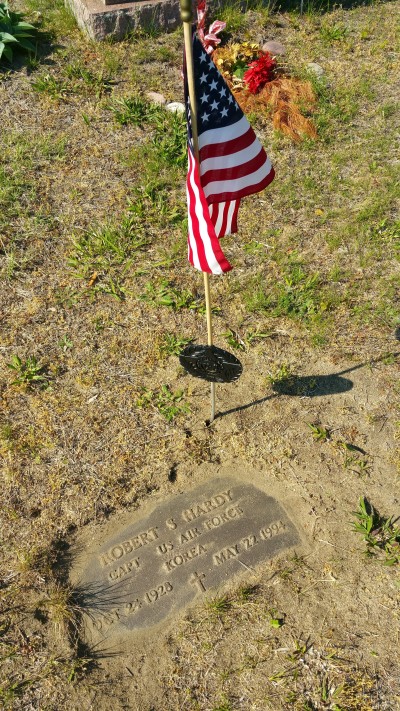 nto the yesteryear of Brewster. The earliest grave is Rhoda Mayo, who died in 1783 and was the eleven month old daughter of the town blacksmith, Asa Mayo. Her grave and others before 1816 are thought to have been moved from other cemeteries, perhaps the First Parish burial ground. The first original burial was Martha Crocker who died in 1816. Interestingly, two daughters of Martha, Sally and Eliza, are memorialized in both the Brewster Cemetery and the First Parish burial ground.
nto the yesteryear of Brewster. The earliest grave is Rhoda Mayo, who died in 1783 and was the eleven month old daughter of the town blacksmith, Asa Mayo. Her grave and others before 1816 are thought to have been moved from other cemeteries, perhaps the First Parish burial ground. The first original burial was Martha Crocker who died in 1816. Interestingly, two daughters of Martha, Sally and Eliza, are memorialized in both the Brewster Cemetery and the First Parish burial ground.
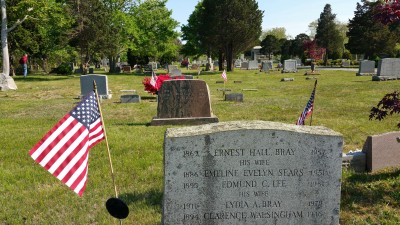 The first available record of the purchase of a lot is in 1829 when Isaac Lincoln’s son paid $5.15 “for land for burying” his father. The earliest records of how the land was acquired were lost in the Barnstable Courthouse fire of 1827. While the origins of the cemetery remain a mystery, there are a number of deeds starting in 1841 which show how land was acquired. In the first of these Charles Lincoln sold 74 square rods (about half an acre) to Elkanah Winslow and six others for $16.
The first available record of the purchase of a lot is in 1829 when Isaac Lincoln’s son paid $5.15 “for land for burying” his father. The earliest records of how the land was acquired were lost in the Barnstable Courthouse fire of 1827. While the origins of the cemetery remain a mystery, there are a number of deeds starting in 1841 which show how land was acquired. In the first of these Charles Lincoln sold 74 square rods (about half an acre) to Elkanah Winslow and six others for $16.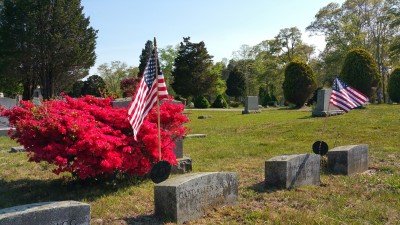 18. The land was described as a “burying grounds for the deposite of the dead.” In an 1843 deed these same people sold the land to a group of Proprietors of the “Brewster Burial Ground.” By this sale the owners released their group rights to the property to
18. The land was described as a “burying grounds for the deposite of the dead.” In an 1843 deed these same people sold the land to a group of Proprietors of the “Brewster Burial Ground.” By this sale the owners released their group rights to the property to 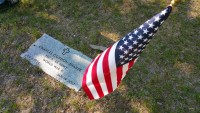 the new Proprietors and to future purchasers of lots, but retained ownership of their personal lots. In this sale, are the roots of the current Brewster Cemetery Association in that for the first time the land was owned by a group of lot owners who were in the business of selling lots.
the new Proprietors and to future purchasers of lots, but retained ownership of their personal lots. In this sale, are the roots of the current Brewster Cemetery Association in that for the first time the land was owned by a group of lot owners who were in the business of selling lots.
These deeds are followed by others which describe additions to the cemetery. The first two in 1848 doubled its size. In 1885, Ebenezer Nickerson sold about an acre for $100 to the Trustees of the Brewster Cemetery Association. That was the first use of the name by which the organization is known today. In 1901 Zipporah Gibbs sold eight acres and “the dwelling house and all out buildings located thereon” to the Association for $425. This parcel extended all the way to Cape Cod Bay. Then, the Proprietors turned right around and sold five of the acres, including the waterfront, to John and Clara Berry.
No one knows exactly why the cemetery was begun. One possible explan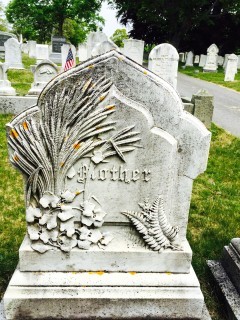 ation is that around the turn of the century cultural attitudes toward death and cemetery esthetics underwent a noticeable change. In the 17th and 18th centuries tombstones were typically made of slate, engraved with skulls and often bore somber inscriptions reflecting Puritan beliefs. But, around 1800 a neoclassical revival, imported from Europe, was reflected in the cemeteries of New England and tombstones featured more romantic and emotional motifs and inscriptions. Weeping willows and urns replaced the death’s-heads. It is probable that the Brewster families who began the new cemetery wanted a more modern setting with well-spaced and clearly delineated family plots with avenues for carriages, as well as the use of fancier marble tombstones and monuments.
ation is that around the turn of the century cultural attitudes toward death and cemetery esthetics underwent a noticeable change. In the 17th and 18th centuries tombstones were typically made of slate, engraved with skulls and often bore somber inscriptions reflecting Puritan beliefs. But, around 1800 a neoclassical revival, imported from Europe, was reflected in the cemeteries of New England and tombstones featured more romantic and emotional motifs and inscriptions. Weeping willows and urns replaced the death’s-heads. It is probable that the Brewster families who began the new cemetery wanted a more modern setting with well-spaced and clearly delineated family plots with avenues for carriages, as well as the use of fancier marble tombstones and monuments.
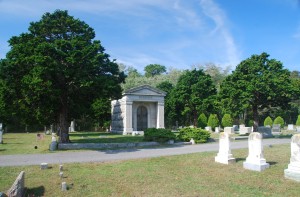 The early lots were 10 by 27 feet in size and could accommodate up to nine graves. Many early purchasers bought several of these lots and envisioned a multi-generational burial ground for their descendents for generations to come. Two of the larger of these mega-lots, which can both accommodate over seventy burials, are the Crosby lot distinguished by the large obelisk and the Nickerson lot which has the only mausoleum in the cemetery. There is, however, a temporary mausoleum of sorts. Just south of the old pump shed is a low structure which was used for the storage of bodies in the 1800’s when the ground was frozen and graves couldn’t be dug. Bodies were kept there waiting for warmer days.
The early lots were 10 by 27 feet in size and could accommodate up to nine graves. Many early purchasers bought several of these lots and envisioned a multi-generational burial ground for their descendents for generations to come. Two of the larger of these mega-lots, which can both accommodate over seventy burials, are the Crosby lot distinguished by the large obelisk and the Nickerson lot which has the only mausoleum in the cemetery. There is, however, a temporary mausoleum of sorts. Just south of the old pump shed is a low structure which was used for the storage of bodies in the 1800’s when the ground was frozen and graves couldn’t be dug. Bodies were kept there waiting for warmer days.
The 1840’s and 1850’s were the heyday of clipper ships and many sea captai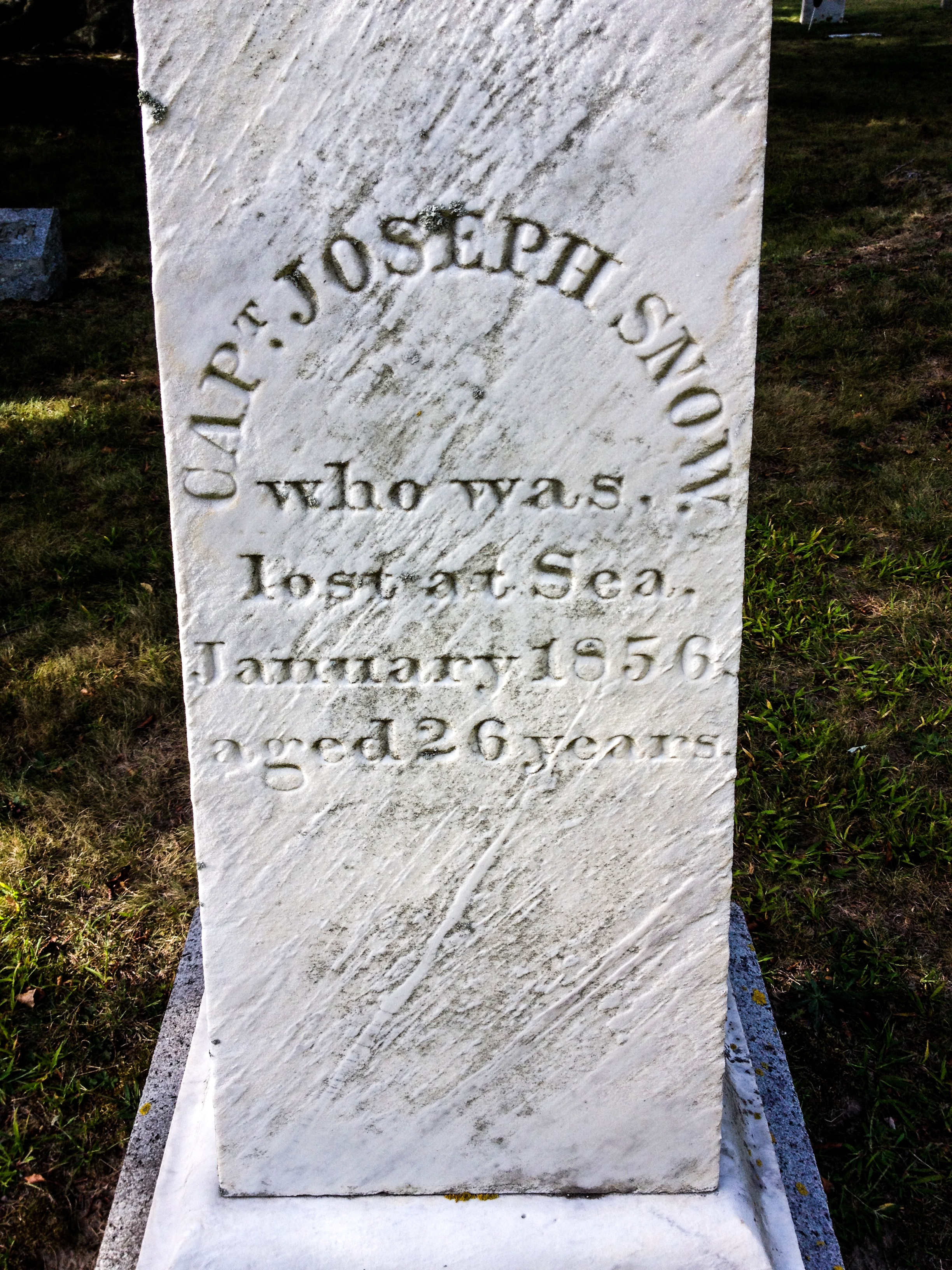 ns lived in Brewster. During this period over 50 percent of the male population of Brewster over the age of 15 was identified to the census taker as a mariner. So the Cemetery became the final resting place, or memorial site if lost at sea, for many of Brewster’s famous sea captains as by this time the First Parish burial ground was full. Captains bearing many of Brewster’s historic names such as Clark, Cobb, Crosby, Foster, Freeman, Hopkins, Knowles, Lincoln, Myrick, Paine and Snow are among the dozens of sea captains buried or memorialized in the cemetery. In 1898 the first Cemetery Rules and Regulations were established which included a prohibition against driving a horse any faster than a walk on cemetery premises. Tully Crosby, a retired ship’s captain, was elected the first President.
ns lived in Brewster. During this period over 50 percent of the male population of Brewster over the age of 15 was identified to the census taker as a mariner. So the Cemetery became the final resting place, or memorial site if lost at sea, for many of Brewster’s famous sea captains as by this time the First Parish burial ground was full. Captains bearing many of Brewster’s historic names such as Clark, Cobb, Crosby, Foster, Freeman, Hopkins, Knowles, Lincoln, Myrick, Paine and Snow are among the dozens of sea captains buried or memorialized in the cemetery. In 1898 the first Cemetery Rules and Regulations were established which included a prohibition against driving a horse any faster than a walk on cemetery premises. Tully Crosby, a retired ship’s captain, was elected the first President.
The VFW installs American flags annually on the graves of veterans who are buried in the cemetery. There are veterans buried in the cemetery from almost all of America’s wars including the Revolutionary and Civil War.